Abstract
Image quality can be defined objectively in terms of the performance of some "observer" (either a human or a mathematical model) for some task of practical interest. If the end user of the image will be a human, model observers are used to predict the task performance of the human, as measured by psychophysical studies, and hence to serve as the basis for optimization of image quality. In this paper, we consider the task of detection of a weak signal in a noisy image. The mathematical observers considered include the ideal Bayesian, the nonprewhitening matched filter, a model based on linear-discriminant analysis and referred to as the Hotelling observer, and the Hotelling and Bayesian observers modified to account for the spatial-frequency-selective channels in the human visual system. The theory behind these observer models is briefly reviewed, and several psychophysical studies relating to the choice among them are summarized. Only the Hotelling model with channels is mathematically tractable in all cases considered here and capable of accounting for all of these data. This model requires no adjustment of parameters to fit the data and is relatively insensitive to the details of the channel mechanism. We therefore suggest it as a useful model observer for the purpose of assessing and optimizing image quality with respect to simple detection tasks.
Full text
PDF
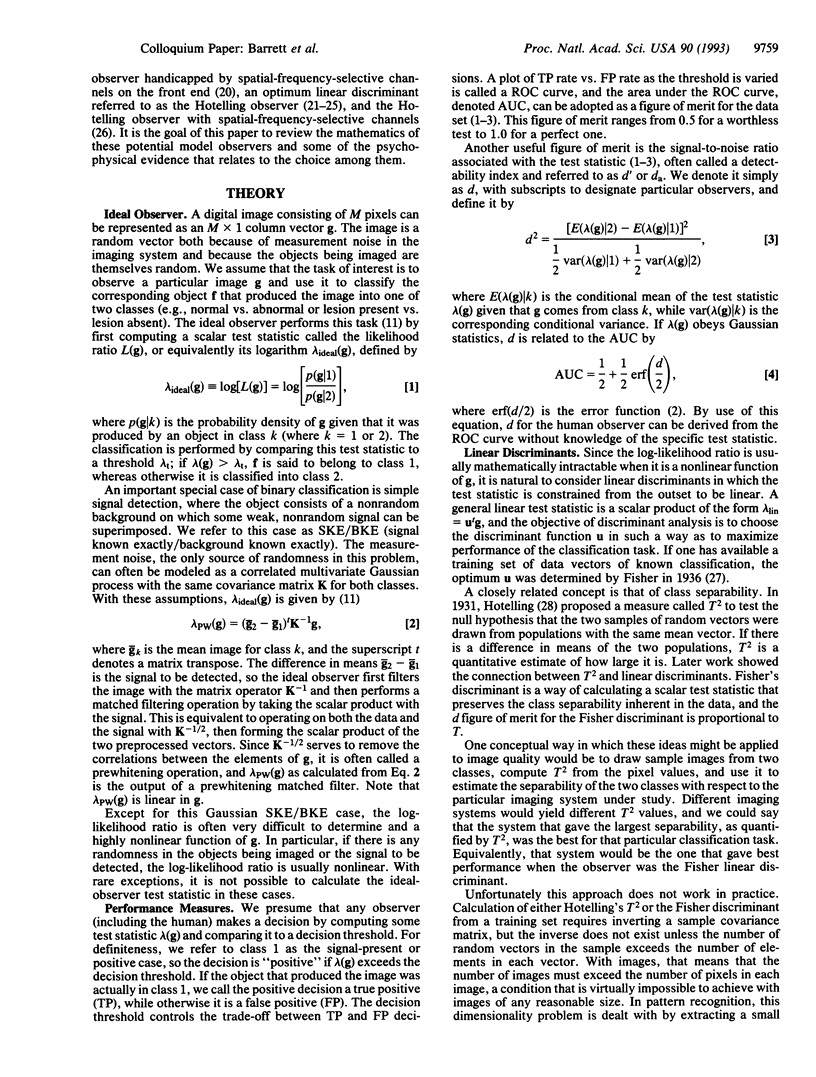
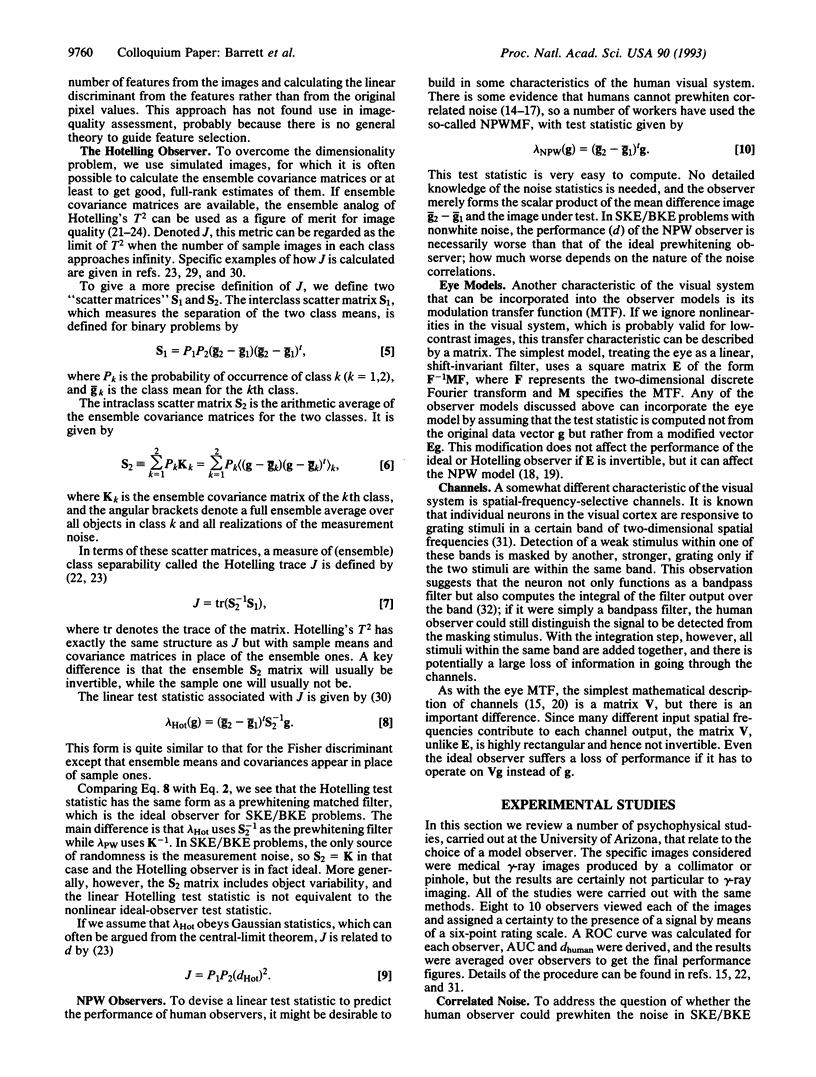
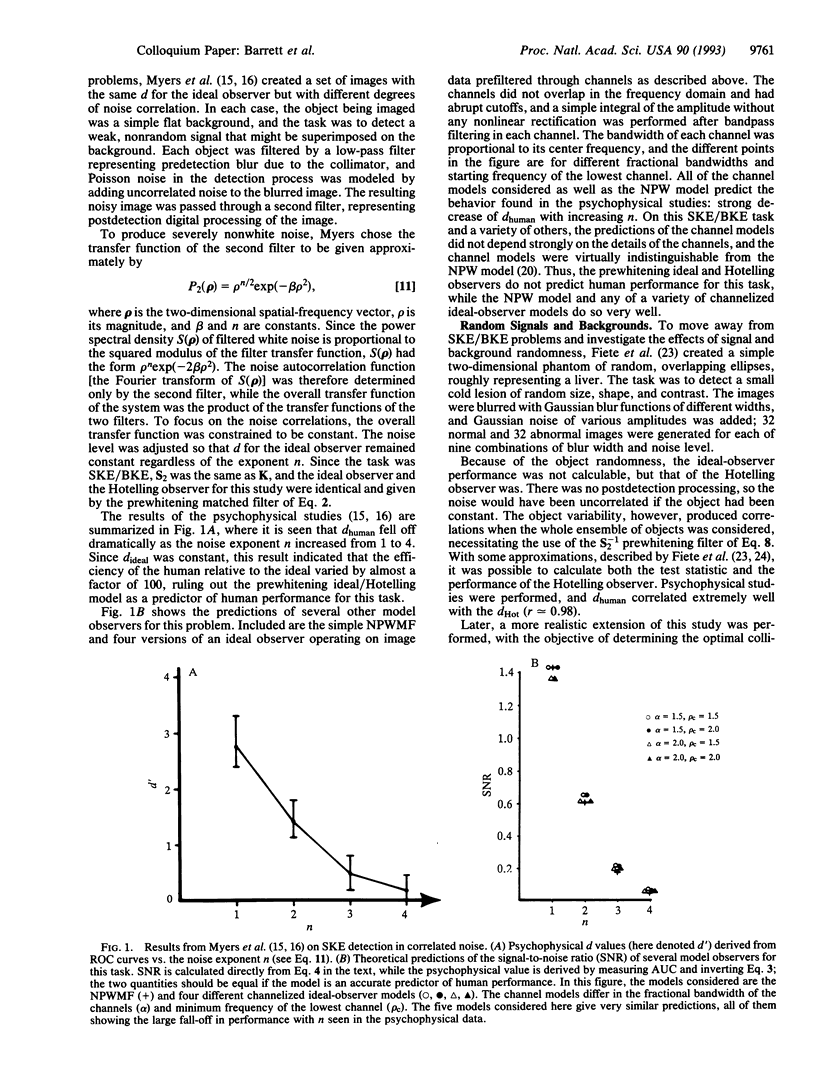
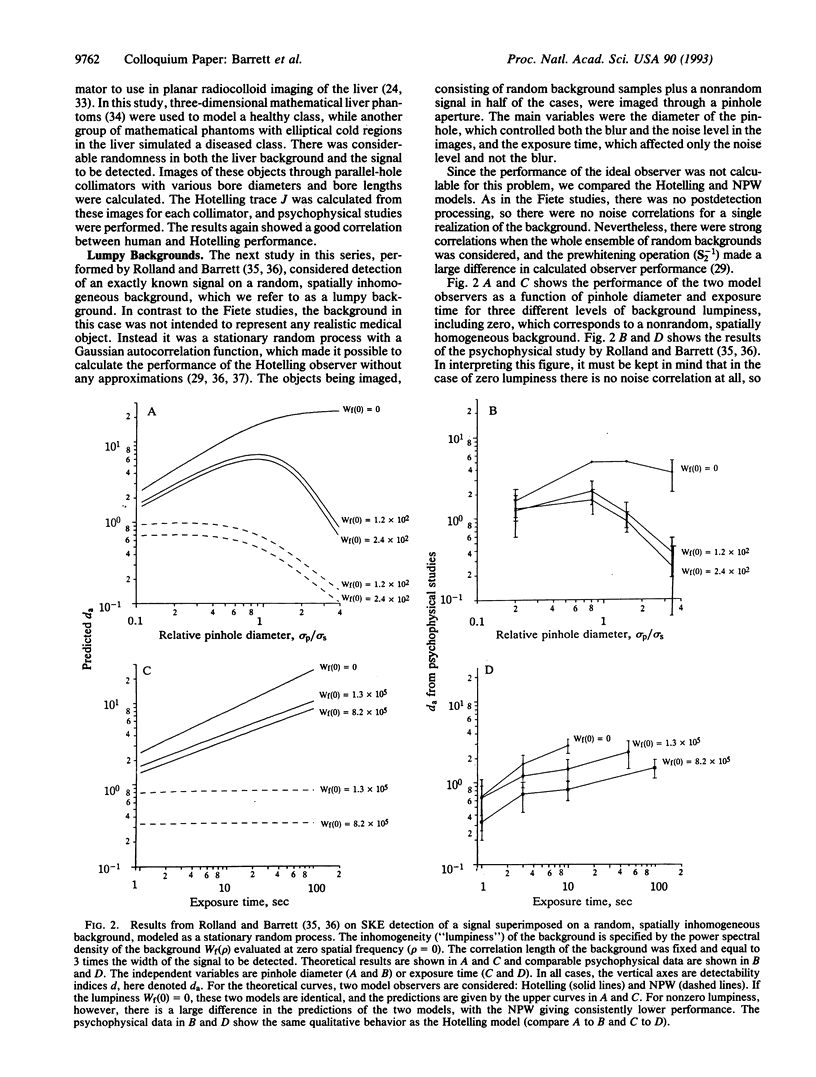
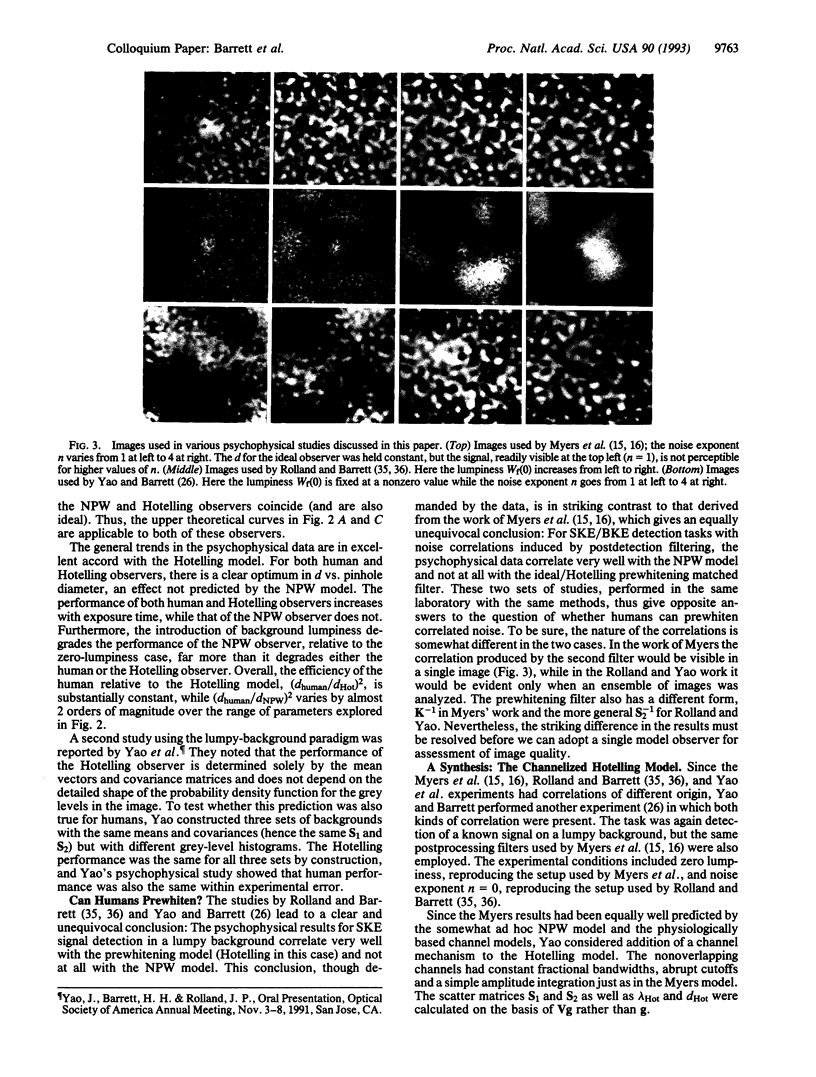
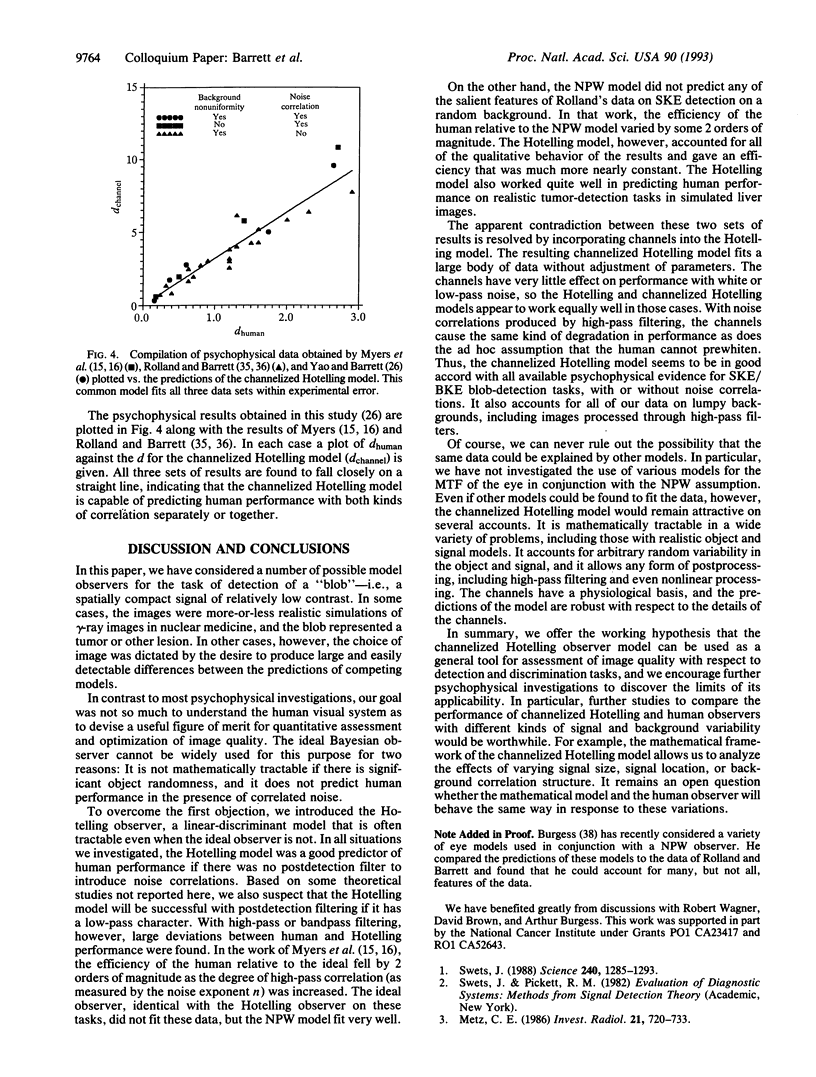
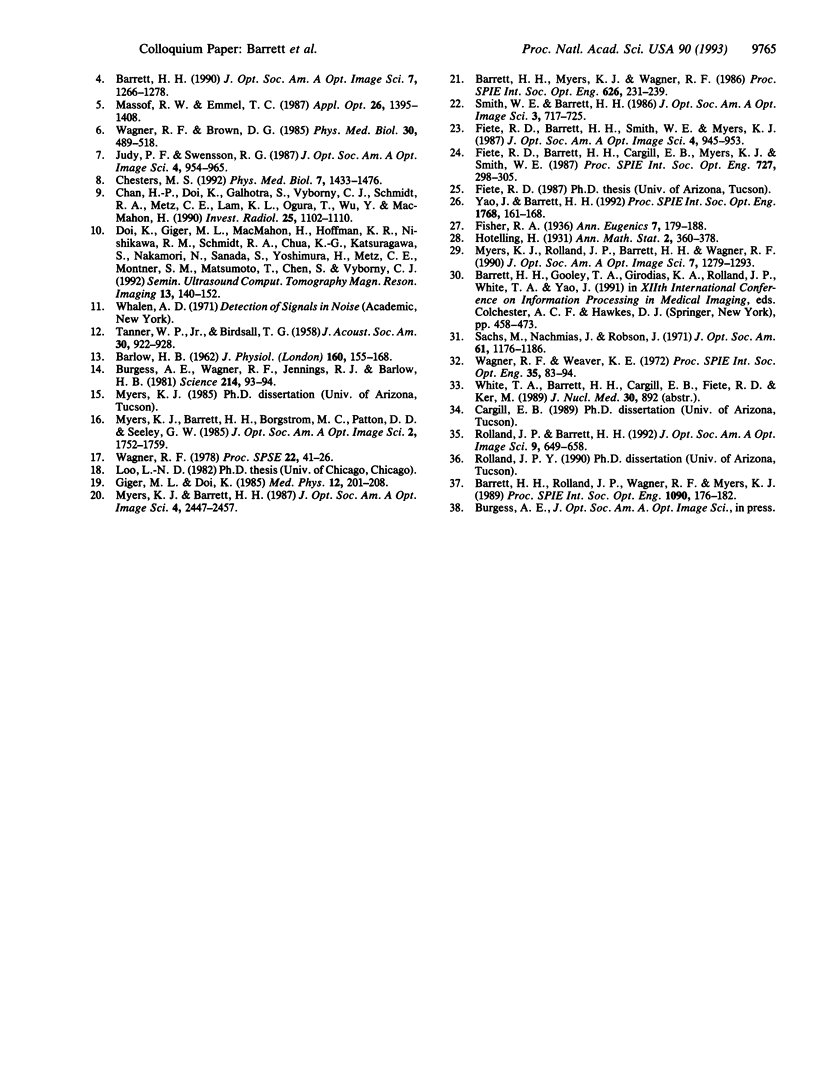
Images in this article
Selected References
These references are in PubMed. This may not be the complete list of references from this article.
- BARLOW H. B. A method of determining the over-all quantum efficiency of visual discriminations. J Physiol. 1962 Jan;160:155–168. doi: 10.1113/jphysiol.1962.sp006838. [DOI] [PMC free article] [PubMed] [Google Scholar]
- Barrett H. H. Objective assessment of image quality: effects of quantum noise and object variability. J Opt Soc Am A. 1990 Jul;7(7):1266–1278. doi: 10.1364/josaa.7.001266. [DOI] [PubMed] [Google Scholar]
- Burgess A. E., Wagner R. F., Jennings R. J., Barlow H. B. Efficiency of human visual signal discrimination. Science. 1981 Oct 2;214(4516):93–94. doi: 10.1126/science.7280685. [DOI] [PubMed] [Google Scholar]
- Chan H. P., Doi K., Vyborny C. J., Schmidt R. A., Metz C. E., Lam K. L., Ogura T., Wu Y. Z., MacMahon H. Improvement in radiologists' detection of clustered microcalcifications on mammograms. The potential of computer-aided diagnosis. Invest Radiol. 1990 Oct;25(10):1102–1110. doi: 10.1097/00004424-199010000-00006. [DOI] [PubMed] [Google Scholar]
- Chesters M. S. Human visual perception and ROC methodology in medical imaging. Phys Med Biol. 1992 Jul;37(7):1433–1476. doi: 10.1088/0031-9155/37/7/001. [DOI] [PubMed] [Google Scholar]
- Doi K., Giger M. L., MacMahon H., Hoffmann K. R., Nishikawa R. M., Schmidt R. A., Chua K. G., Katsuragawa S., Nakamori N., Sanada S. Computer-aided diagnosis: development of automated schemes for quantitative analysis of radiographic images. Semin Ultrasound CT MR. 1992 Apr;13(2):140–152. [PubMed] [Google Scholar]
- Fiete R. D., Barrett H. H., Smith W. E., Myers K. J. Hotelling trace criterion and its correlation with human-observer performance. J Opt Soc Am A. 1987 May;4(5):945–953. doi: 10.1364/josaa.4.000945. [DOI] [PubMed] [Google Scholar]
- Giger M. L., Doi K. Investigation of basic imaging properties in digital radiography. 3. Effect of pixel size on SNR and threshold contrast. Med Phys. 1985 Mar-Apr;12(2):201–208. doi: 10.1118/1.595708. [DOI] [PubMed] [Google Scholar]
- Judy P. F., Swensson R. G. Display thresholding of images and observer detection performance. J Opt Soc Am A. 1987 May;4(5):954–965. doi: 10.1364/josaa.4.000954. [DOI] [PubMed] [Google Scholar]
- Metz C. E. ROC methodology in radiologic imaging. Invest Radiol. 1986 Sep;21(9):720–733. doi: 10.1097/00004424-198609000-00009. [DOI] [PubMed] [Google Scholar]
- Myers K. J., Barrett H. H. Addition of a channel mechanism to the ideal-observer model. J Opt Soc Am A. 1987 Dec;4(12):2447–2457. doi: 10.1364/josaa.4.002447. [DOI] [PubMed] [Google Scholar]
- Myers K. J., Barrett H. H., Borgstrom M. C., Patton D. D., Seeley G. W. Effect of noise correlation on detectability of disk signals in medical imaging. J Opt Soc Am A. 1985 Oct;2(10):1752–1759. doi: 10.1364/josaa.2.001752. [DOI] [PubMed] [Google Scholar]
- Myers K. J., Rolland J. P., Barrett H. H., Wagner R. F. Aperture optimization for emission imaging: effect of a spatially varying background. J Opt Soc Am A. 1990 Jul;7(7):1279–1293. doi: 10.1364/josaa.7.001279. [DOI] [PubMed] [Google Scholar]
- Rolland J. P., Barrett H. H. Effect of random background inhomogeneity on observer detection performance. J Opt Soc Am A. 1992 May;9(5):649–658. doi: 10.1364/josaa.9.000649. [DOI] [PubMed] [Google Scholar]
- Sachs M. B., Nachmias J., Robson J. G. Spatial-frequency channels in human vision. J Opt Soc Am. 1971 Sep;61(9):1176–1186. doi: 10.1364/josa.61.001176. [DOI] [PubMed] [Google Scholar]
- Swets J. A. Measuring the accuracy of diagnostic systems. Science. 1988 Jun 3;240(4857):1285–1293. doi: 10.1126/science.3287615. [DOI] [PubMed] [Google Scholar]



